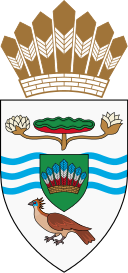Guyana is blessed with a dramatic topography and majestic forests, huge mountains, miles of rivers, waterfalls and untouched beaches. With so much natural treasure close at hand, your tryst with adventure is inevitable. Here are some of the best places to travel to Guyana.
Georgetown: Georgetown is Guyana’s capital, on South America’s North Atlantic coast. The city is culturally connected to the English-speaking Caribbean region and home to British colonial architecture, including the tall, Gothic-style St. George’s Anglican Cathedral. A clock tower rises above Stabroek Market, popular for local goods. The Guyana National Museum presents details of the country’s history, which is fascinating to explore.
The Walter Roth Museum of Anthropology has artifacts from indigenous Amerindian tribes. Close by are the State House, where the president lives, and the National Library of Guyana, originally funded by philanthropist Andrew Carnegie. The sprawling, tropical plant–filled Botanical Gardens to the east includes a zoo with many birds. Nearby, the National Gallery of Art is set within the grand, 19th-century Castellani House. Georgetown is also a jumping-off point for trips to Guyana’s densely forested interior, where Kaieteur Falls features a wide, single drop.
Surama: This traditional Amerindian village in the forest-covered Pakaraima mountains 300km south of the capital Georgetown is home of the Makushi tribe.
The Surama people run the show here as part of a community-based tourism initiative with a tour operator based in Georgetown. There are four huts just outside the village, which are basic, but dry and cool. Guides take you on a tour of the village to watch the pounding of cassava and on dawn walks across the Rupununi savannah and up Surama mountain.
Nearby is the 30m-high Iwokrama Canopy Walkway and a hammock camp on the river edge that provides a base for canoe trips on the Burro Burro river to see giant otters, tapirs and spider monkeys.
Kaieteur Falls: Watching 1140 metric tons of water shooting over a 250m cliff (the world’s highest single-drop falls) in the middle of an ancient jungle with few tourists in sight, is a once-in-a-lifetime experience. Depending on the season, the falls are from 76m to 122m wide. The trail approaching the falls is home to scarlet Guianan cock-of-the-rock birds, and miniscule golden frogs (best seen in the rainy season and/or in the morning), which produce a potentially fatal poison
The North Rupununi: The North Rupununi savannas are Africa-like plains scattered with Amerindian villages, small islands of jungle and an exceptional diversity of wildlife. Rivers full of huge caimans and the world’s largest water lilies (Victoria amazonica) cut through plains of golden grasses and termite mounds, and a mind-boggling array of birds fly across the sky. In the background the Pakaraima Mountains loom, more verdant hillsides than vast peaks, but which nonetheless give the landscape a touch of drama. On a human level, the North Rupununi feels like a tight-knit community spread over a vast area – everyone knows everyone and strangers are warmly welcomed. The heart of the north Rupununi is the village of Annai, a crossroads for Amerindian peoples with a few sleeping options and an airstrip.
Dadanawa Ranch: The De Frietas’ remote and historic ranch is straight out of National Geographic, with three stilted timber guesthouses facing the distant Kanuku Mountains. Once the largest cattle producer in the Western Hemisphere, Dadanawa remains a working ranch and welcomes visitors to experience a plethora of activities and adventures. The ranch is the perfect base for expeditions in search of the Harpy Eagle in the rainforest and Amerindian paintings and petroglyphs on the savannah. Dadanawa is also the jumping off point for boating and trekking adventures into the pristine wilderness of the Kanuku Mountains.
Here you will fill your days tracking harpy eagles, jaguars, giant anteaters, anacondas and the red siskin finch.
Iwokrama Rainforest: Established as a protected reserve in 1996, this exceptional region is home to South America’s largest cat, the jaguar, and the world’s highest recorded number of fish and bat species, not to mention the world’s largest freshwater fish, otters, river turtles, anteaters, snakes, rodents, eagles and caimans. While wildlife can be tough to spot, birders will love the canopy walkway located in the middle of the reserve, and excursions run by the two big lodges here aim to get you into the jungle to see its unique inhabitants yourself.
Shell Beach: This is one of the least developed areas of the entire South American coastline; the only human additions are in the form of temporary fishing huts and small Amerindian settlements. From March through to August, Shell Beach becomes the nesting ground for four of the world’s eight endangered species of marine turtles: leatherback, green, hawksbill and olive ridley. All four species of sea turtles are protected in Guyana by the Protected Areas Act of 2011 and the Fisheries Act 2002. Most of the world’s sea turtle nesting sites are visited by only one or two species, adding to the exceptionality of Shell Beach.
The entire area is broadly referred to as Shell Beach, but nine sections of beach have been given separate names, such as Almond, Kamwatta, Tiger and Gwennie.
Source: Times Kuwait


